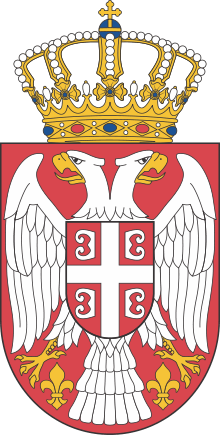Braničevo (region)
Braničevo (Serbian Cyrillic: Браничево, pronounced [brǎnitʃɛʋɔ]) is a geographical region in east-central Serbia. It is mostly situated in the Braničevo District.
History

In the 9th century, a Slavic (or Serb[1]) tribe known as Braničevci are mentioned living in the region. In this time, the town named Braničevo also existed in the area, at the estuary of the river Mlava into Danube. In the Early Middle Ages, Braničevo became a part of the First Bulgarian Empire. After the conquest of Bulgaria, the Byzantines established the Theme of Sirmium in the wider region south of the river Danube. Syrmia, and hence Braničevo, came to be contested between Kingdom of Hungary on the one side, and the Byzantine Empire and the Second Bulgarian Empire (after its independence from the Byzantines) on the other. In the 13th century the Hungarians established the Banate of Braničevo (Banovina of Braničevo), but later in the century two local Bulgarian rulers, Darman and Kudelin, became independent and ruled over Braničevo and Kučevo. In 1291, they were defeated by the Serbian king, Stefan Dragutin, who joined Braničevo to his Syrmian Kingdom. Under his rule the town of Braničevo became a seat of the Eparchy of the Serbian Orthodox Church.[2] The region later belonged to subsequent Serbian states, until it was conquered by the Ottoman Empire in the 15th century. In the 14th century, the region was in a possession of local rulers from the House of Rastislalić. During the Ottoman rule, Braničevo was part of the Sanjak of Smederevo, and since 19th century, it is again part of the Serbian state.
See also
References
- ↑
- ↑ Fine, John V.A. (1994). The Late Medieval Balkans: a critical survey from the late twelfth century to the Ottoman conquest. University of Michigan Press. p. 261. ISBN 9780472082605.
